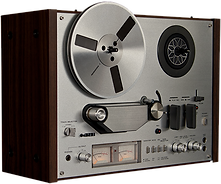
*GUYANA*
*PORTGUAL*


Soca music (also known as the soul of calypso) is a genre of Caribbean music that originated within a marginalized subculture in the Trinidad and Tobago in the late 1970s, and developed into a range of style in the 1980s and later. Soca developed as an offshoot of kaiso/calypso, with influences from cadence, funk and soul
Calypso is a style of Afro-Caribbean music that originated in Trinidad and Tobago during the early to mid-20th century. Its rhythms can be traced back to West African Kaiso and the arrival of French planters and their slaves from the French Antilles in the 1700s.
Chutney soca has become virtually indistinguishable from what is considered normal chutney in recent years. Drupatee Ramgoonai coined the term with the release of her album, "Chatnee Soca," in 1987. The style had an emphasis on Hindi lyrics and the beats of the dholak and dhantal. It was further popularized by the 1994 album, "Soca Chutney," by Sonny Mann. It was credited as the best selling Indo-Caribbean album ever, with its title track hitting the top of charts not only in the Caribbean, but in the United States, Canada, and England.
Modern chutney soca, like many chutney subgenres, has incorporated more use of keyboards, drum machines, and other electronic instruments.
Reggae is a music genre that originated in Jamaica in the late 1960s. While sometimes used in a broad sense to refer to most types of popular Jamaican dance music, the term reggae more properly denotes a particular music style that was strongly influenced by traditional mento and calypso music, as well as American jazz and rhythm and blues, especially the New Orleans R&B practiced by Fats Domino and Allen Toussaint, and evolved out of the earlier genres ska and rocksteady.[1]
Stylistically, reggae incorporates some of the musical elements of rhythm and blues, jazz, mento (a celebratory, rural folk form that served its largely rural audience as dance music and an alternative to the hymns and adapted chanteys of local church singing),[2] calypso, African music, as well as other genres. One of the most easily recognizable elements is offbeat rhythms; staccato chords played by a guitar or piano (or both) on the offbeats of the measure. The tempo of reggae is usually slower than ska and rocksteady.[3] The concept of "call and response" can be found throughout reggae music.
The bass guitar often plays the dominant role in reggae. The bass sound in reggae is thick and heavy, and equalized so the upper frequencies are removed and the lower frequencies emphasized. The guitar in reggae usually plays on the off beat of the rhythm. It is common for reggae to be sung in Jamaican Patois, Jamaican English, and Iyaric dialects.
FOODS OF THE ISLAND VERY DELICIOUS:
FIVE FINGER TREE, PEAS AND RICE, CHICKEN, ROTI AND CHICKEN CURRY WITH POTATOS.







THE SUPREME COURT OF GUYANA

PARLIAMENT BUILDING SINCE 1834

Kaieteur Falls

